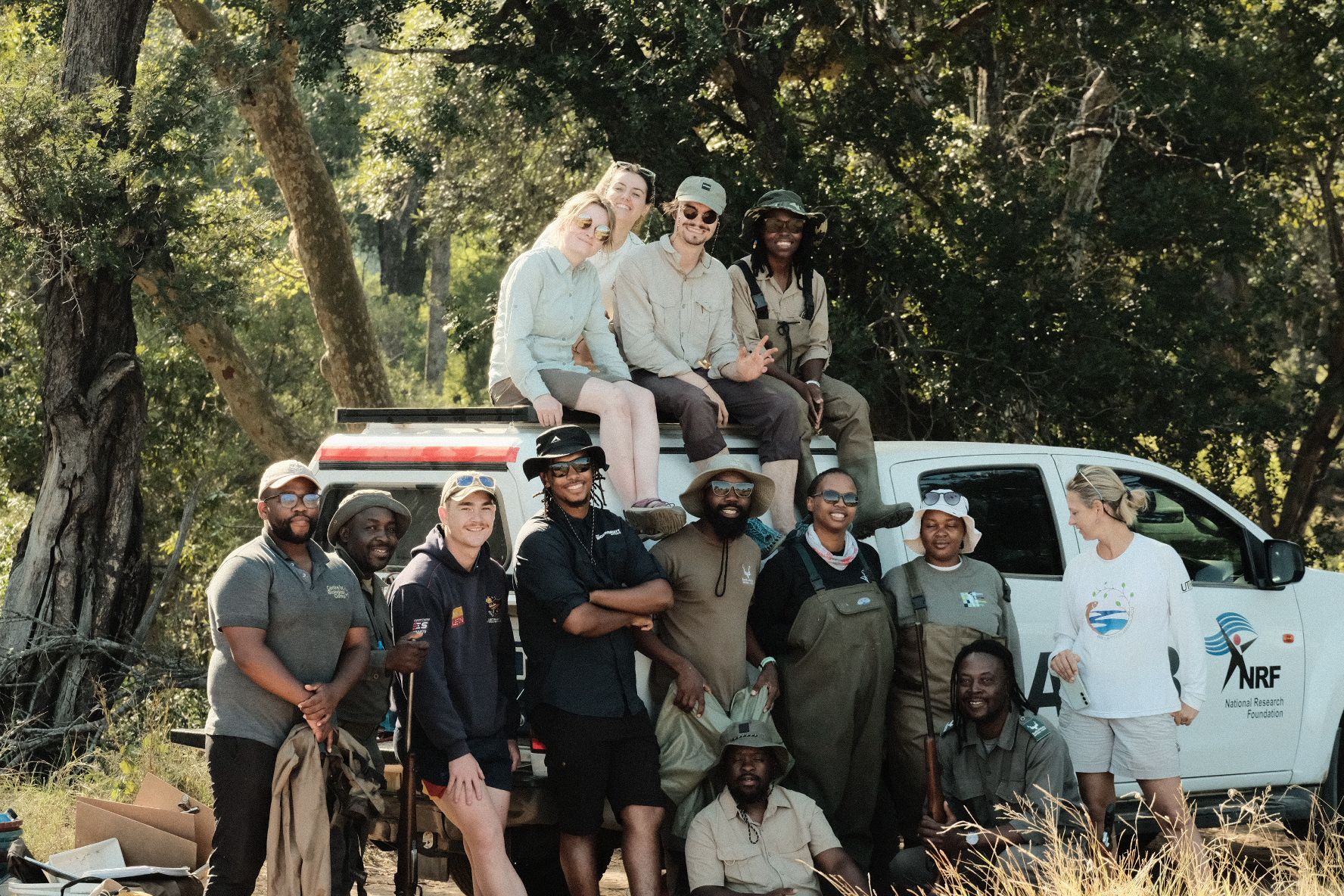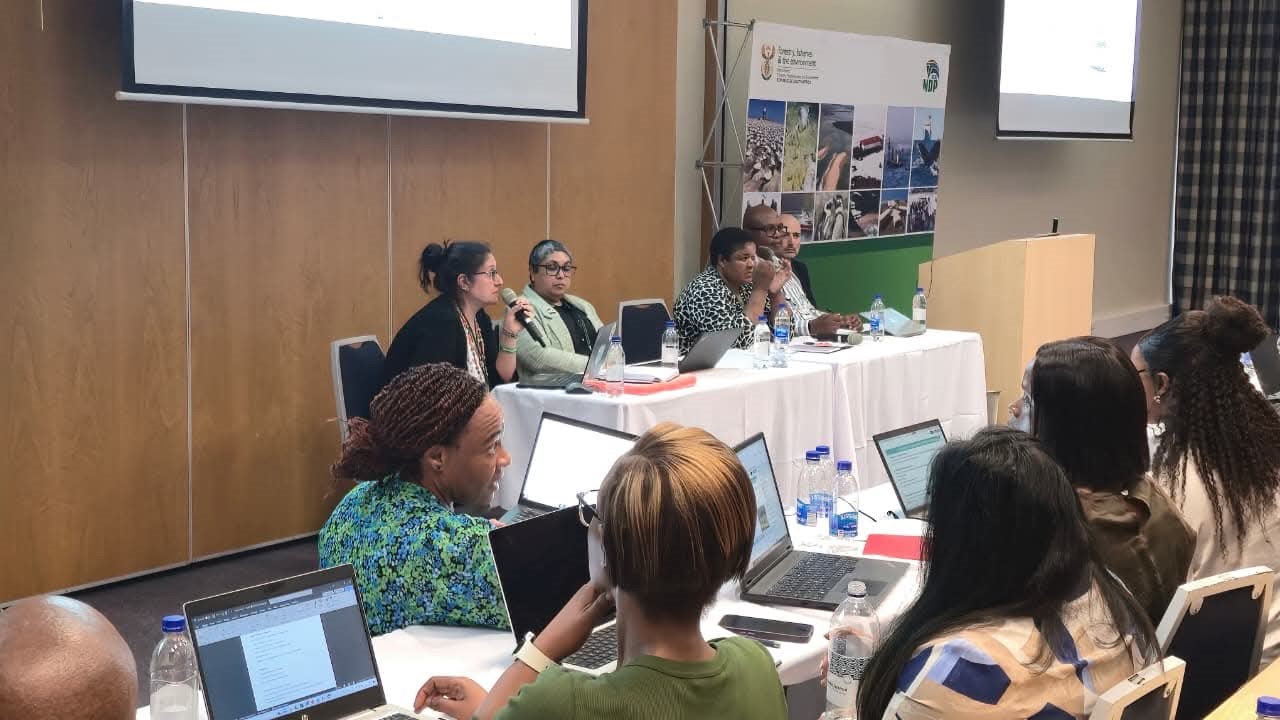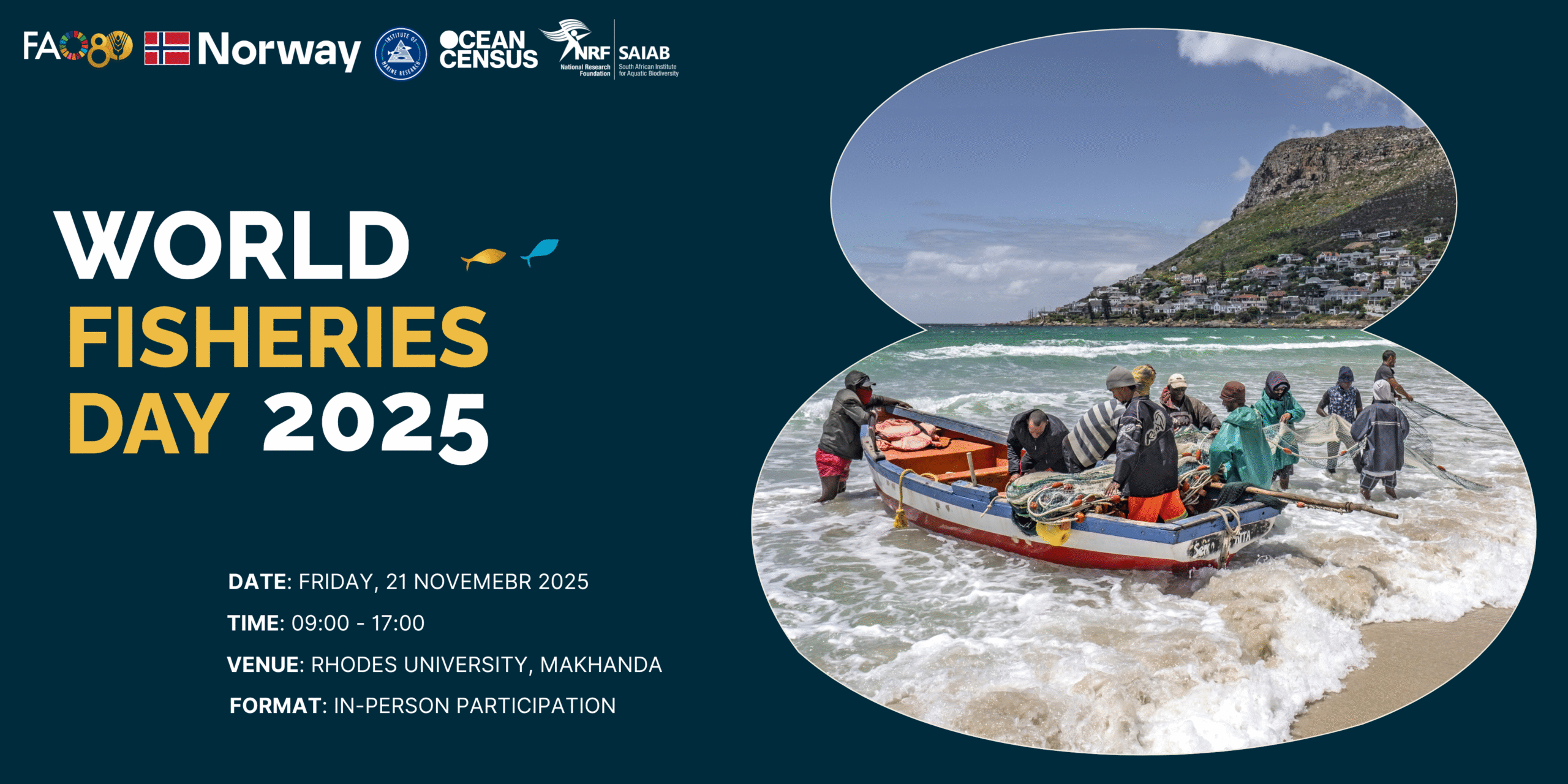By: Drs. Nompumelelo Baso-Mdiza, Dumisani Khosa and Josie South
In May 2025, a diverse team of researchers embarked on a two-week expedition to the Kruger National Park (KNP), one of South Africa’s most iconic conservation areas. Their mission: to explore the health of the rivers that sustain life across the Park by investigating the impacts of invasive aquatic species.
This collaborative field campaign brought together scientists, early-career researchers, and postgraduate students from several institutions, including the University of Mpumalanga, Charles Sturt University (Australia), Leeds University (UK), Rhodes University, the NRF-South African Institute for Aquatic Biodiversity (NRF-SAIAB), South African National Parks (SANParks), Rivers of Life, and Albany Museum.
A paper based on this research has just been published and provides the first dataset of African freshwater crab distribution and abundance and morphometric data for future studies. The team used almost a decade of standardised monitoring data in southern Africa to compare and predict invasion trajectory in the Kruger National Park. The paper concludes that crayfish invasion is established and spreading throughout the Crocodile, Sabie and Sand Rivers. The paper’s second author is Leeds FBS MSc student Olivia Stubbington .
The multidisciplinary team examined every level of the aquatic ecosystem – from algae and aquatic plants to macroinvertebrates, invasive crayfish, and fish communities – along with river habitats and water quality. Together, these data points help build a holistic picture of river health and ecological interactions.
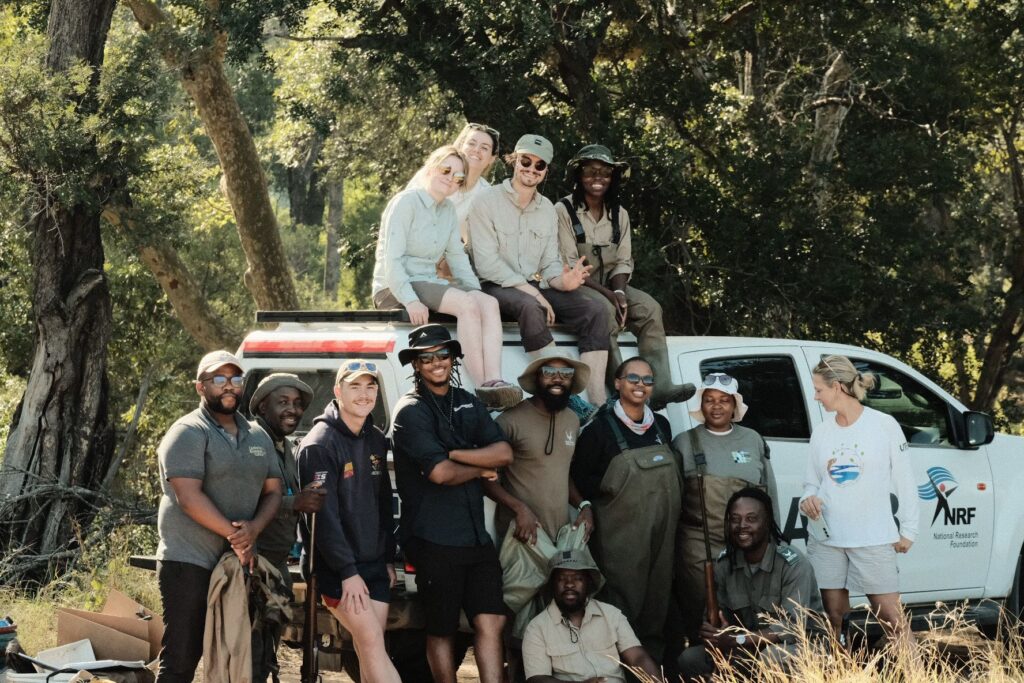
Diving into the Rivers
The research team sampled three river systems – the Crocodile, Sabie, and Sand Rivers – using a variety of tools and methods including crayfish traps, fyke nets, cast nets, kick nets, and electrofishing. These techniques helped capture variations in species composition, ecosystem processes, and environmental pressures.
At the heart of the study was one critical question: Who is eating whom? Understanding these food web interactions in a changing river environment helps us assess the health of freshwater ecosystems and the threats they face – particularly from invasive species. This expedition marked the third instalment of an ongoing annual monitoring initiative in KNP’s rivers. It builds on past efforts to track the spread of species like the red-claw crayfish and assess broader river health within South Africa’s protected areas.
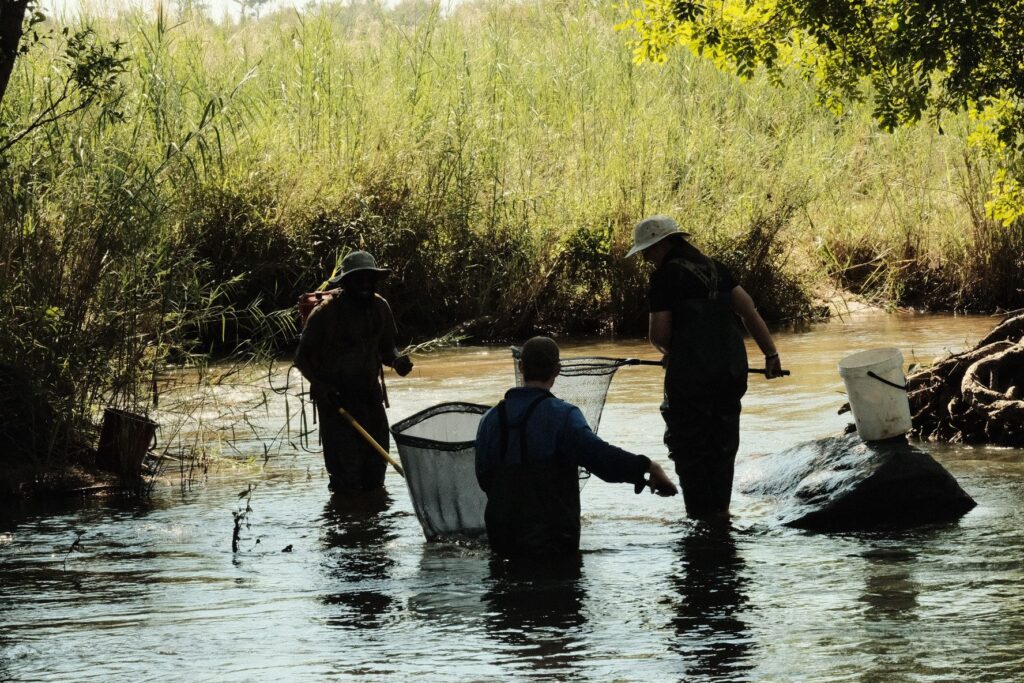
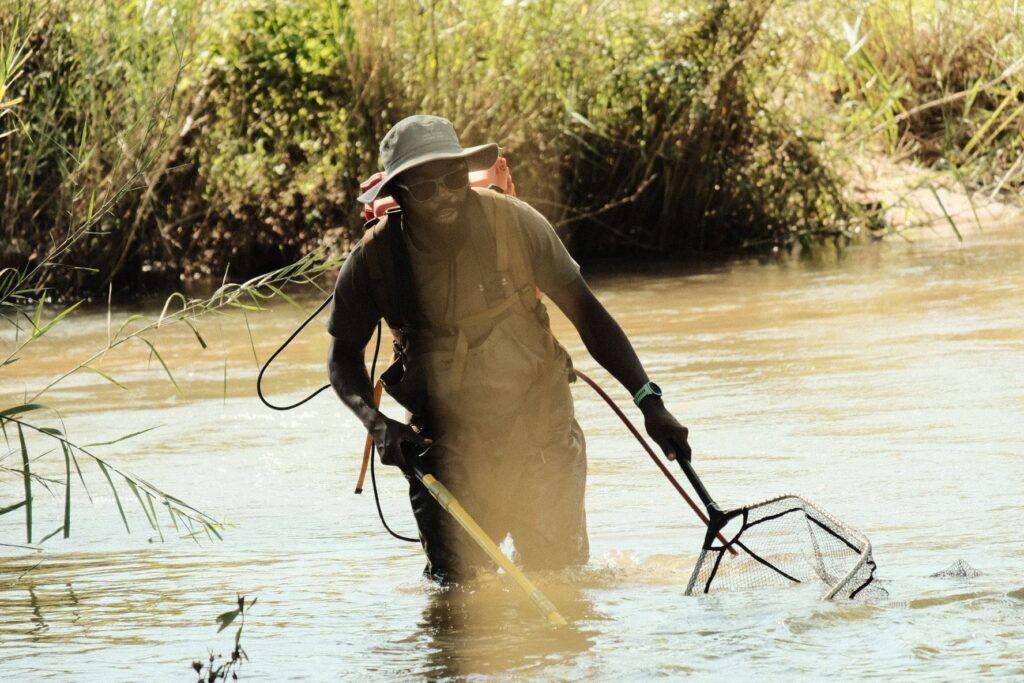
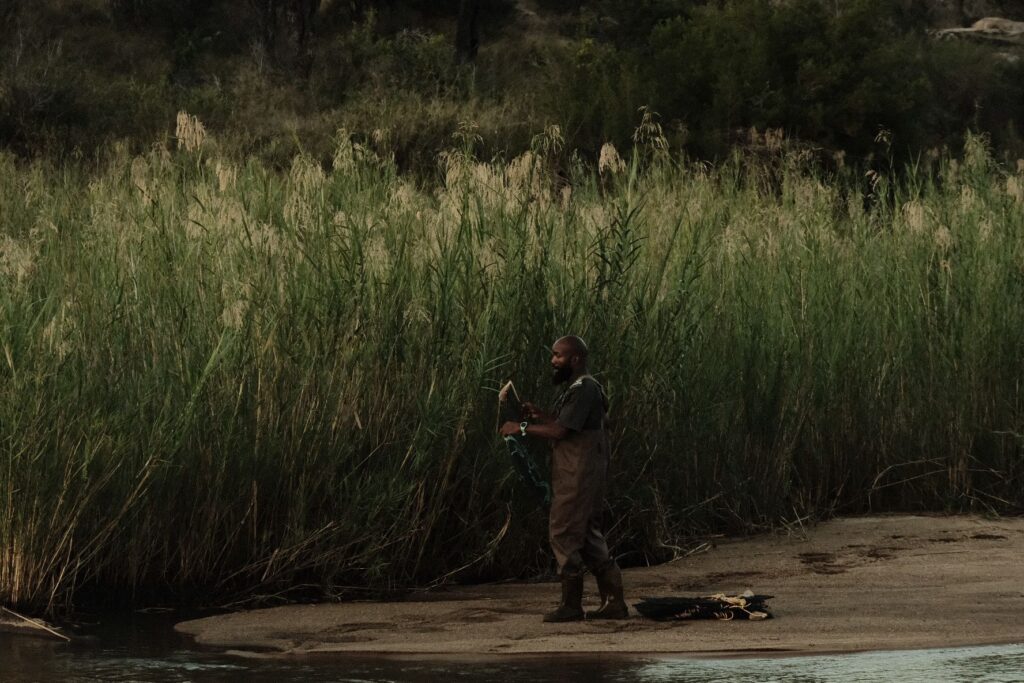
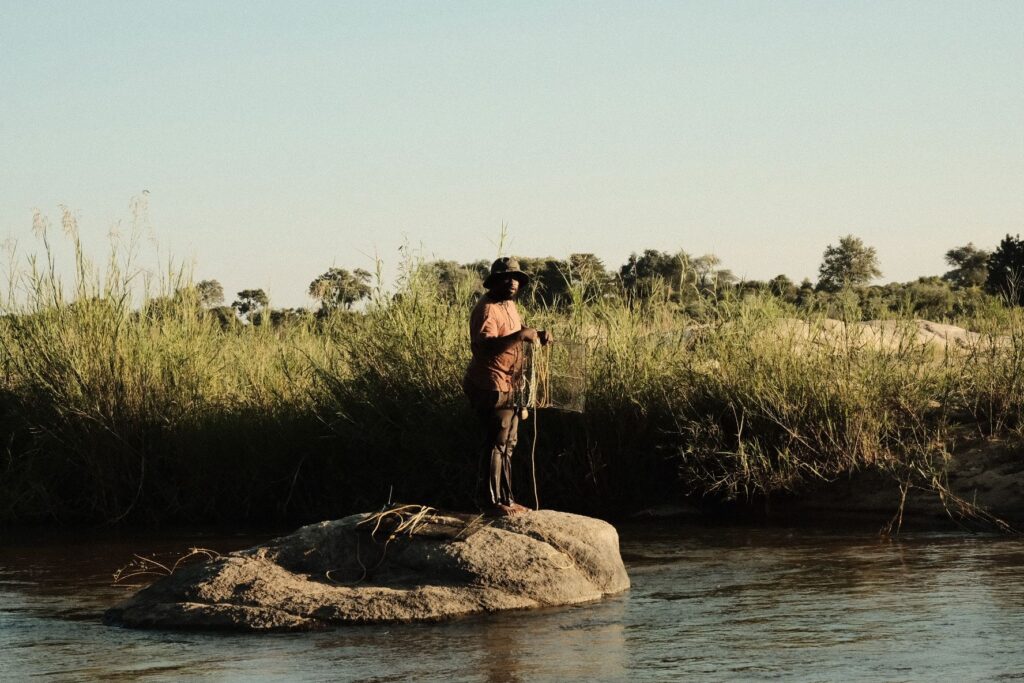
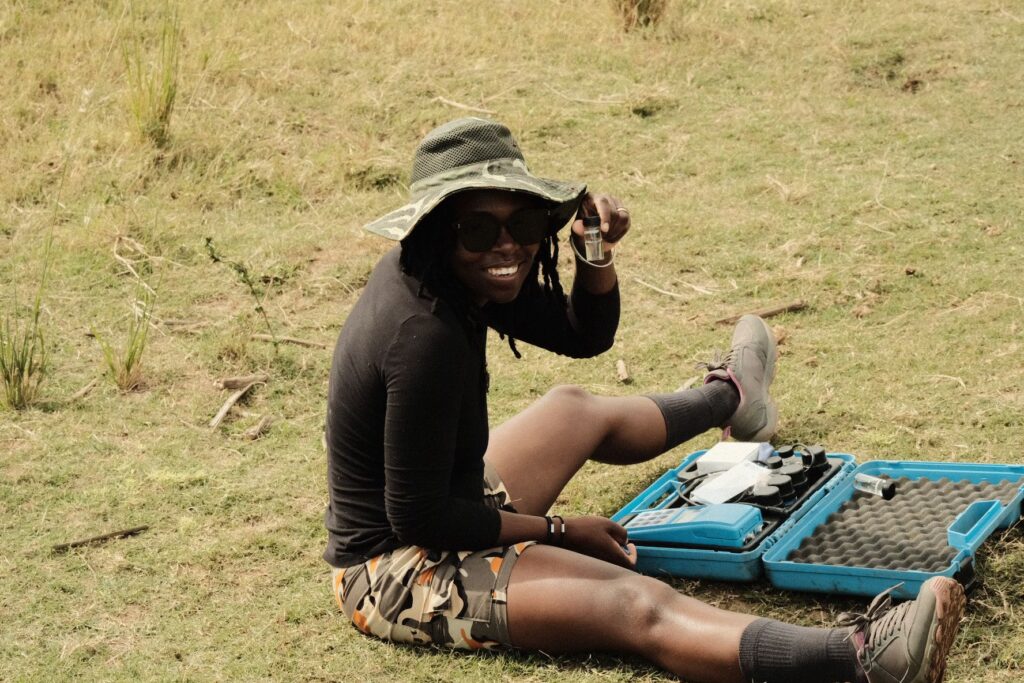
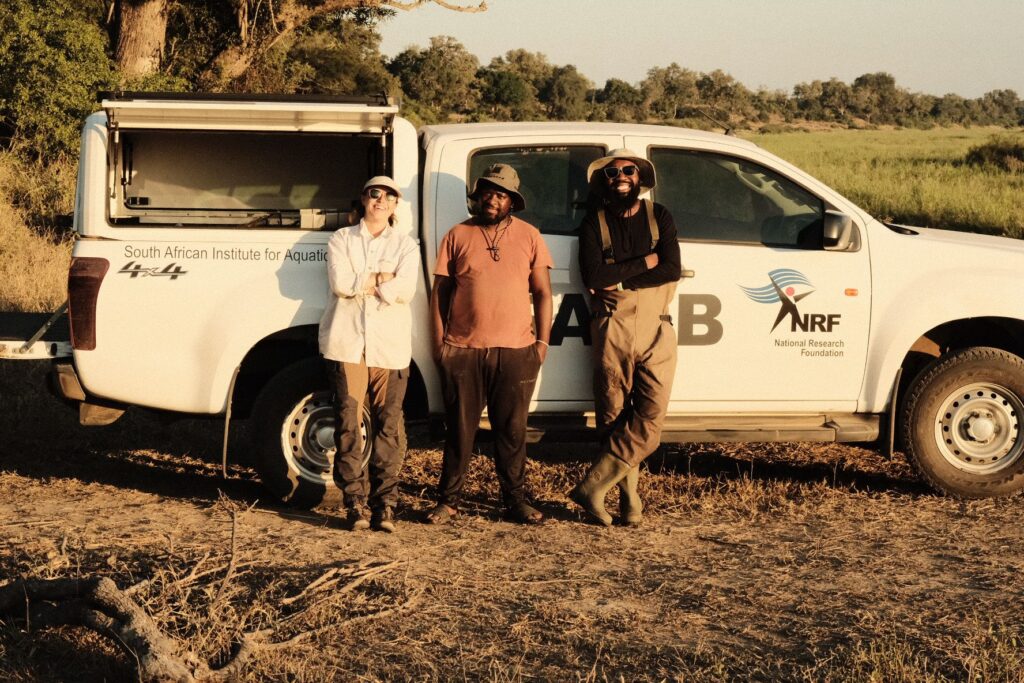
Early Findings: Unwelcome Visitors
Preliminary observations confirm that the highly invasive red-claw crayfish continues to spread within the park. In addition, the freshwater snail Tarebia granifera was found in abundance across most sampling sites. Water hyacinth was the most commonly observed invasive plant, often appearing alongside Parrot’s Feather and Water Lettuce – all of which pose serious threats to native biodiversity and ecosystem functioning.
Though these results are early, they reflect worrying patterns seen in previous surveys. Protected areas like Kruger are often assumed to be untouched havens, but these findings challenge that notion and call for proactive ecosystem-based management.
Why This Research Matters: Invasive Species and Human Livelihoods
This work aims to inform timely, science-based action against invasive species using comprehensive, ecosystem-level data. By studying the entire food web – from microorganisms to fish – scientists can detect early warning signs, assess ecological disruptions, and guide tailored management strategies. This could include biological control interventions suited to South Africa’s unique river systems.
Importantly, the rivers studied originate and terminate outside the Park, highlighting that their protection is not only a concern for conservationists, but a national and regional issue. These rivers are lifelines for biodiversity, communities, and economies closely linked to several UN Sustainable Development Goals (SDGs).
Invasive species are a leading driver of biodiversity loss and economic hardship, especially in developing countries where research capacity and resources are often limited. The red-claw crayfish, for example, threatens artisanal fisheries by damaging nets, preying on fish fry, and altering ecosystems. This research not only informs conservation but also addresses broader concerns about food security, economic sustainability, and community wellbeing in southern Africa. Protecting rivers is not just a scientific duty – it’s a collective responsibility.
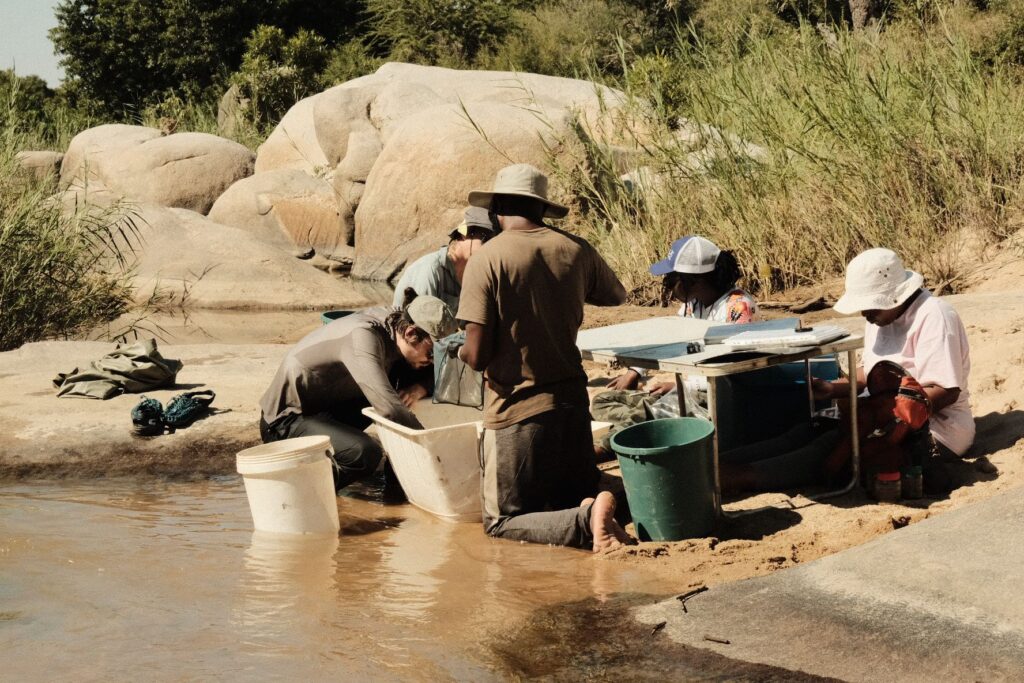
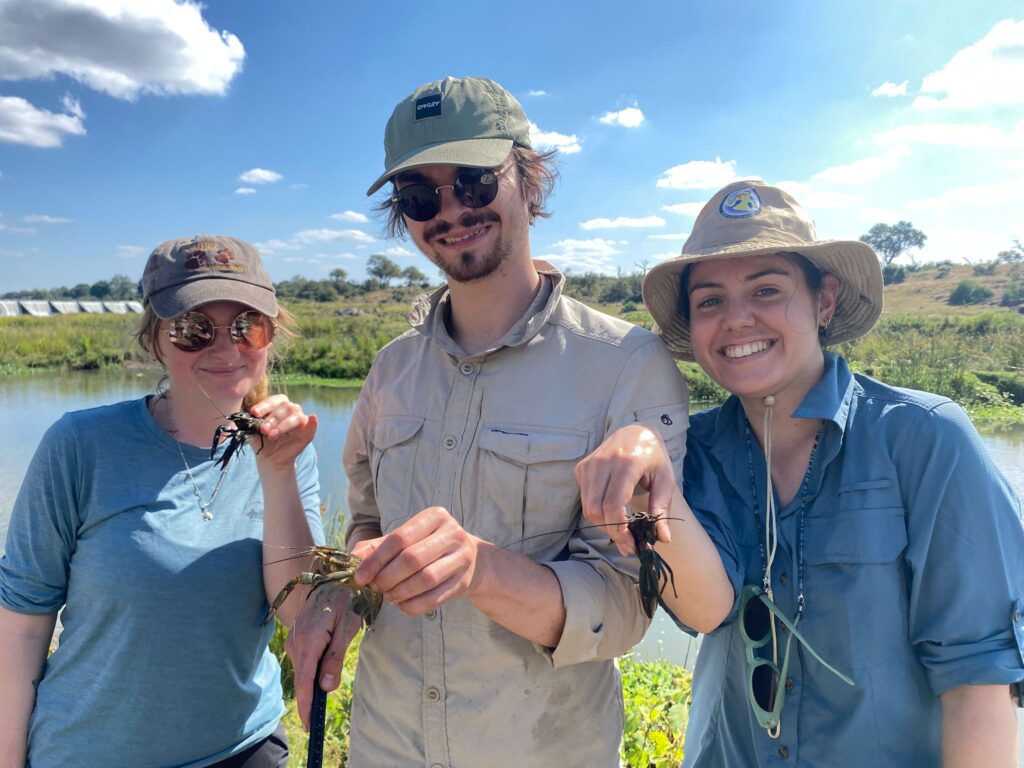
A Collaborative Effort with Far-Reaching Impact
This ambitious research effort was co-led by Dr Josie South of Leeds University, who focused on the distribution and impact of invasive crayfish on local food webs. She was joined by her postdoctoral fellow and two PhD students, Dr Danai Kontou, Emma Baker, and James Hodson (above), with support from Albany Museum experts.
Dr Dumisani Khosa, freshwater ecologist at KNP, co-led the project with a particular focus on fish communities. He was joined by Dr Lubabalo Mofu, instrument scientist and platform manager at NRF-SAIAB. Professor Julie Coetzee, Deputy Director at the Centre for Biological Control (CBC) and DSTI/NRF-SAIAB SARChI Chair, provided expertise on invasive plant species, along with Dr Nompumelelo Baso-Mdiza, a PDP Postdoctoral Fellow in Botany.
Dr Gordon O’Brien and his team – Bradley Matainz, Angus Boulton, and Annelize Erasmus – contributed their expertise in fish and macroinvertebrate sampling. Students from the University of Mpumalanga also joined the fieldwork to gain valuable hands-on experience.
Related research paper
South, J., O. Stubbington, A. Kaiser-Reichel, et al. 2025. “ Rapid Establishment and Impact Assessment of the Redclaw Crayfish (Cherax quadricarinatus) Invasion in the Kruger National Park, South Africa.” Aquatic Conservation: Marine and Freshwater Ecosystems 35, no. 7: e70184. https://doi.org/10.1002/aqc.70184.
